This post may contain affiliate links. Please read our disclosure policy.
Learn how to make fresh homemade gluten free pasta with the simplest gf pantry ingredients, without a pasta maker or any special equipment (unless you want to use it!). Serve it with all your favorite pasta dishes!
Making gluten free homemade pasta is a labor of love. But it's a simple process. All it takes is the right recipe—and a little time. Find out exactly how to do it! I promise you it's worth the effort.
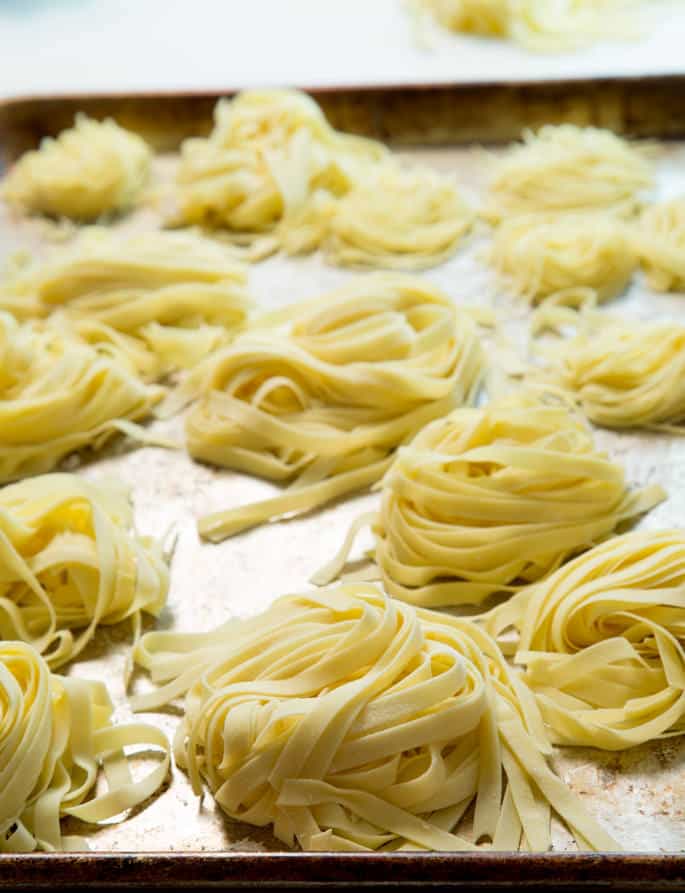
What makes this gluten free pasta recipe so special?
Why would anyone make fresh pasta when dried pasta can be had at every grocery store—even when you're gluten free? It's a fair question, and the answer is that you wouldn't bother, all the time.
But fresh pasta is just really, really special, and it's worth making sometimes. There are a couple varieties of fresh gluten free pasta that you can buy, mostly at Whole Foods. I admit, I'm sometimes tempted to try just one package.
But at over $15 for 9 ounces, it just isn't happening.
The first time I shared a recipe for homemade gluten free pasta here on the blog was in 2009. I was concerned that I was creating unrealistic expectations for my children.
It was one of the first times that my son made the connection between scratch cooking and, well, cooking not-from-scratch. He was 5 at the time.
My kids see me boiling store-bought dried pasta all the time. No biggie. But when they first saw me make fresh pasta, my son started thinking. When he finished his dinner of homemade ravioli, he asked, “Hey, Mom, wouldn't it be cool if you made your own water?”
My son, now full grown, doesn't wonder if I'll be making my own water next. Or water into wine.
Instead, he asks, “why would you do that, when you can just buy it?” Ah, the blessings of having children… Oh, and if you love the idea of making fresh pasta but just can't swing it right now, here are 8 excellent brands of gluten free dried pasta to try.
What's the best gluten free flour for pasta?
For this recipe you need a high quality all purpose gluten free flour blend. My choice of gluten free flour is Better Batter for this particular recipe, as it has the right blend of finely ground rice flour and starches.
Cup4Cup is another good alternative. Or you can make your own all purpose gf flour mix with my easy guide. Your choice of gluten free flour blend is important in every recipe, but it's even more important in a simple recipe like this.

How to make this gluten free pasta recipe
It’s best to use a food processor to make this fresh pasta dough. If you only have a small food processor, just make it in batches. Just divide the recipe roughly in half, or in quarters if necessary, and be sure to use at least 1 egg or 1 egg yolk in each batch.
If you’re using a food processor to make the dough.
- Place the dry ingredients first (the gluten free flour blend, including xanthan gum, plus Expandex or tapioca starch, along with salt) in the food processor, followed by the olive oil, eggs and egg yolks. Pulse the food processor a few times, just until the mixture is combined. It won’t be smooth yet.
- With the food processor on and the hopper removed, drizzle in 1/3 cup of water. The dough will be wet, but not smooth.
- Add more water slowly, with the machine still on, and the pasta dough will clump and come together. Process until it’s smooth.
If you’re making the dough by hand.
- Place all of the dry ingredients in a large mixing bowl, just as you did in the food processor. Whisk them together.
- Use your mixing spoon to create a well in the center of the dry ingredients, and add the oil, eggs, and egg yolks. Mix to combine.
- Add 1/3 cup of water and mix until the dough is moistened, then add more water by the tablespoonful until the dough holds together well. It shouldn’t be stiff, but it also shouldn’t be very sticky on your fingers.
To shape the pasta dough.
- Whether you’re using a pasta machine, whether it’s automatic or hand crank, you’ll need to roll the dough into a rectangle.
- Sprinkle the dough on a flat surface lightly with flour to keep it from sticking to the rolling pin or the rolling surface. Keep the dough moving to help prevent sticking.
- If you’re using a pasta machine, you’ll feed the dough through the machine twice at the largest setting, with the rollers farthest apart from one another. Then, turn the setting up, so the rollers are closer together, and roll it twice. The dough you feel through the machine should be more narrow than the full width of the rollers or it will get caught in the sides.
- I like to stop at level “5” on a pasta roller, and not try to roll the pasta any thinner or it starts to tear.
- If you’re rolling the pasta entirely by hand, just try to get the dough as close as possible to 1/8-inch thick.
- Cut the pasta into shapes however you like, using a pasta machine or by hand. I like to cut mine into flat, long noodles like fettuccini, but you can cut spaghetti if you like using a pasta machine. You can also roll the noodles into rectangles and cut them about 6- to 8-inches long and about 2- to 3-inches wide and use them to make fresh noodles for our family favorite gluten free lasagna.
- If you’ve made long pasta of any kind, twist it gently into nests and allow it to dry briefly before boiling it.
- You can also use a pasta drying rack, where you drape the long noodles over wooden or plastic dowels.
Cooking and serving the pasta.
- Once a large pot of water has come to a boil, you’re ready to place the fresh pasta in it and cook until it’s just al dente.
- It takes no more than 2 to 3 minutes to cook fully. Don’t overcook, or it will begin to fall apart.
- Toss with olive oil or sauce, and serve immediately.
Do you need a pasta machine to make gluten free pasta?
You don't need a pasta machine to make this gluten free pasta recipe, although I do have one.
Sometimes, I use it, and sometimes I don't. But with the holidays approaching, if you're feeling ambitious, you should know how to make it.
You don't need any sort of crank pasta machine to make this fresh gf pasta. You can run it through a hand crank machine, and I can show you how in our recipe for gluten free egg noodles pasta.
It's super easy, if you have the machine, but please don't run out and get one just because you think you must have it to make fresh pasta.
Oh, in case you've ever wondered how to take that pasta and shape it into fresh gluten free tortellini, or gluten free ravioli, we can do that, too.
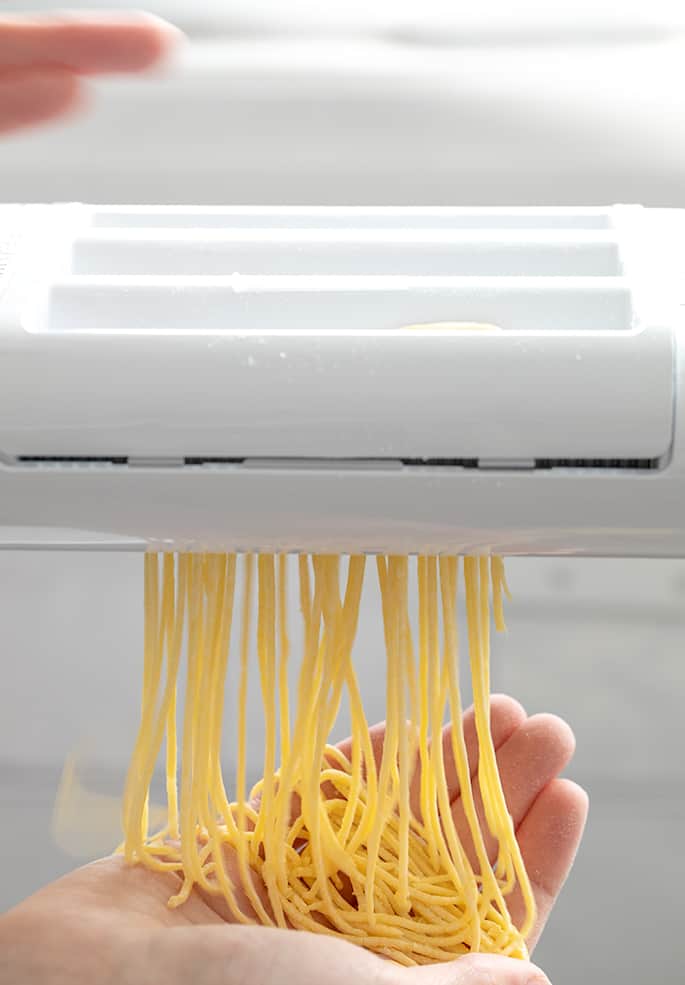
Tips for the making homemade gluten free pasta
Gluten free pasta recipes don't have to be daunting or difficult. You can whip up a batch of gluten free pasta dough in no time. It's not difficult. But I do have few tips for you that'll help make your own pasta better than regular pasta every time.
What if your gluten free pasta dough is too wet?
If you've followed the recipe closely, the pasta dough shouldn't be too wet. But if it is, you need to work in a little more gluten free flour, just a sprinkle at a time, until the dough is firm enough to work.
Can you make gluten free pasta vegan?
To get the real, authentic gluten free pasta taste and texture, I really do think you need eggs. Having said that, I've seen folks have success with a flax egg or a chia egg, but the pasta won't look quite so pretty, and I think the texture may change a little, too. Other egg substitutes for vegan gluten free fresh pasta include aquafaba and non-dairy yogurt.
How do you store fresh gluten free pasta?
You can store the dough, wrapped tightly, in the refrigerator for up to three days before you roll and cook it. You can also freeze it for up to three months.
It's also possible to dry the raw pasta by running it through your pasta roller or rolling and cutting it into fairly thin noodles, forming it into loose “nests”, and setting it in your dehydrator on a low temperature for 12 to 24 hours. Then store the dried nests in an airtight container.
Do I have to use xanthan gum?
Yes, for this recipe, you do need to use xanthan gum in your gluten free pasta dough. Xanthan gum helps with binding and texture. It mimics gluten without causing sensitivity in most people. However, if you need to avoid it, you can try using an equal amount of konjac powder instead, like I did in this recipe for gluten free biscuits without xanthan gum.
I can't guarantee it'll work here, though, as I've only used xanthan gum. So if you try it, let me know if it works!
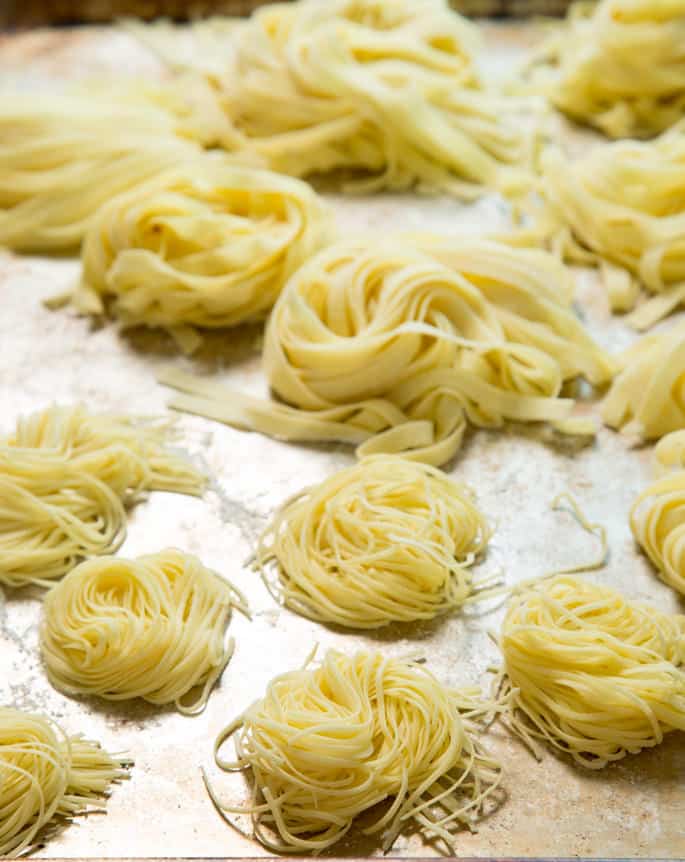
FAQs
Yes, you can freeze raw pasta dough, even if you're on a gluten free diet. Wrap the unshaped dough tightly in a freezer-safe wrap like Glad Press n Seal, and freeze for up to three months. Let it thaw fully before you try to roll it.
Yes, absolutely! This recipe already has a little salt in the dough, and you can add other flavorings if you want, but the easiest and best way to create flavorful pasta is to make beautiful, colorful pasta dishes.
When you're making pasta, whether you're using gf flour or conventional flour, and the dough forms but breaks, it could be for a few different reasons.
The most likely is that you haven't conditioned your dough enough. Pasta dough needs to be kneaded, rolled, and folded multiple times before it's ready to be rolled thin and cut.
It can also happen if the dough isn't hydrated enough. Perhaps the eggs you used were a little smaller than normal, for example (hence I recommend weighing the eggs out of their shells).
Once cooked and refrigerated, gluten free pasta lasts up to three days. The dough, if tightly wrapped, can also last three to five days in the fridge. If you have stored your dough in the refrigerator and it feels stiff, drizzle it very lightly with some lukewarm water and knead it into the dough until it's pliable again (but not so much that it's super sticky).
Don't! You'll ruin all your hard work! Cooking time is crucial for gluten free pasta. If you overcook it, even by a minute or two, it'll go gummy, sticky, or mushy. You cook this pasta for only a couple of minutes, until it's al dente.
No! Although Expandex is modified tapioca starch and it is not the same as “regular” tapioca starch, in this homemade gluten free pasta recipe, they can be used interchangeably. You will likely need more additional water in your homemade pasta, beyond the original 1/3 cup water, if you are using Expandex, and less if you are using tapioca starch, to achieve the same consistency of dough.
You must add the additional tapioca starch (or Expandex) called for in the recipe. All good quality, well balanced all purpose gluten free flour blends contain tapioca starch as an ingredient. This recipe requires more than the usual amount of tapioca starch in your well-balanced blend.
No, no can make the pasta dough using a bowl and spoon, and your clean hands to knead the pasta. The way to make the smoothest dough most quickly is to use a food processor, and if you only have a mini food processor, you can make the dough in batches using that, as long as you divide the ingredients in half so you don't end up adding too much water.
Homemade Gluten Free Pasta Recipe

Equipment
- Food processor, fitted with the steel blade
Ingredients
- 2 cups (280 g) all purpose gluten free flour blend, (I like Better Batter here; click through for details on appropriate blends) plus more for dusting
- 1 ¼ teaspoons xanthan gum, omit if your blend already contains it
- 5 tablespoons (45 g) Expandex modified tapioca starch, (or replace with an equal amount of tapioca starch) (See Recipe Notes)
- ½ teaspoon kosher salt
- 2 (100 g (weighed out of shell)) eggs, at room temperature, beaten
- 2 (50 g) egg yolks, at room temperature, beaten
- 1 tablespoon (14 g) extra virgin olive oil
- ⅓ cup (2.67 fluid ounces) warm water, plus more, as necessary
Instructions
Making the dough with a food processor.
- In the bowl of a food processor fitted with the steel blade, place the flour, xanthan gum, Expandex (or tapioca starch), salt, olive oil, eggs and egg yolks, and pulse until combined.
- Add 1/3 cup water to the mixture in the food processor, and process until the dough is moistened.
- Turn on the food processor on low speed, remove the hopper and add more water very slowly until the dough clumps to one side of the food processor.
Making the dough without a food processor.
- In a large mixing bowl, place the flour, xanthan gum, Expandex (or tapioca starch), and salt. Whisk to combine well.
- Create a well in the center of the dry ingredients, and add the oil, eggs and egg yolks. Mix to combine.
- Add 1/3 cup water to the mixture, and mix until fully moistened.
- Add water about 1 teaspoonful at a time, mixing constantly until the dough holds together well. If the dough feels stiff, add more water until pliable but stop before the dough becomes very sticky.
Shaping the dough.
- Transfer the dough to a lightly floured surface and divide it into 4 parts. Work with one part at a time and cover the others with plastic wrap to prevent the remaining pieces from losing moisture.
- With clean hands, knead the dough until smooth and roll into a rectangle. Divide the dough in half, and roll each half into a rectangle about 1/4-inch thick.
- Trim the edges or the rectangle with a pastry wheel or sharp knife.
- Dust the rolled-out dough lightly with flour, and feed each piece through a pasta machine, if using. I don’t like to roll the dough any thinner than the “5” setting on my machine, or it begins to tear.
- If you're not using a pasta machine, simply roll each piece as close to 1/8-inch thick as possible, as evenly as possible. Dust the pasta lightly with more flour as necessary to keep it from sticking to the surface and to the rolling pin.
- Cut into shapes using the pasta machine or a sharp knife.
- Allow the fresh pasta to sit out to dry, briefly, while you boil water to cook it. If you've cut your pasta into long noodles, twist it gently into nests to dry so that the noodles are less fragile during cooking.
Cooking the pasta.
- Bring a large pot of salted water to a rolling boil.
- Place the fresh pasta in the water and cook, stirring to prevent the dough from clumping, for about 2 minutes or until it reaches an al-dente texture.
- Toss with sauce and serve immediately.
Video
Notes
Nutrition information. Nutrition information is per pound assuming 1.5 pounds in the whole recipe, and assumes that tapioca starch, not Expandex modified tapioca starch, is used in the recipe. It is an estimate provided as a courtesy and should not be relied upon.
Nutrition
Nutrition information is automatically calculated, so should only be used as an approximation.

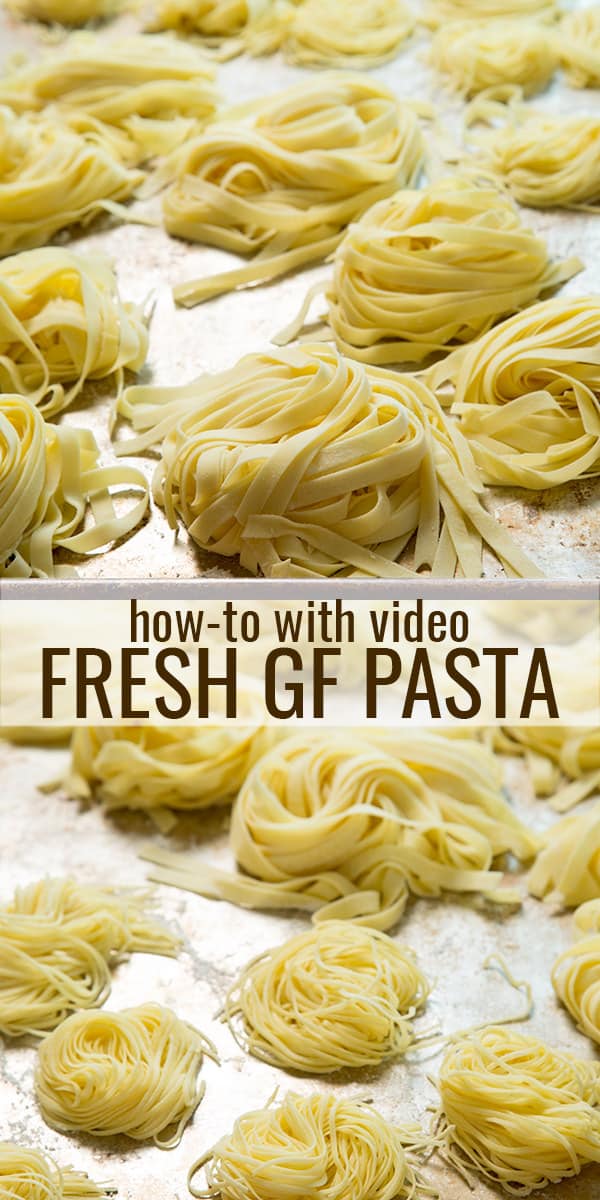
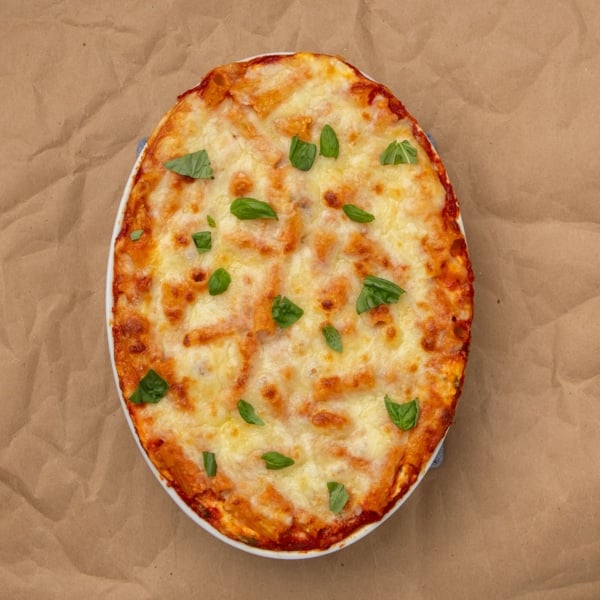
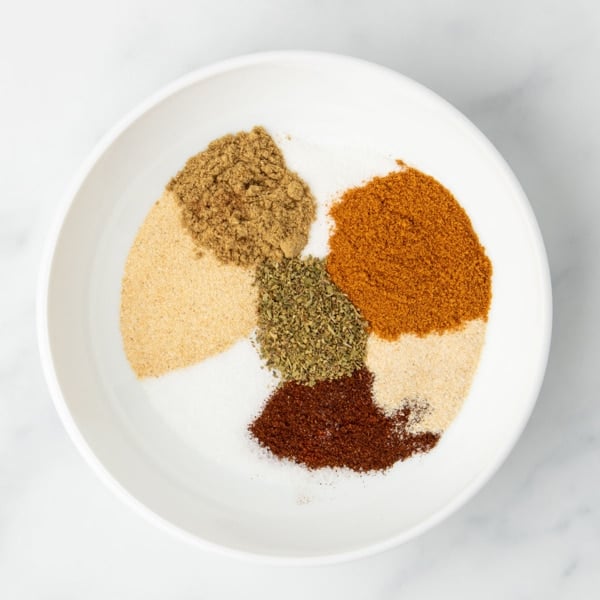
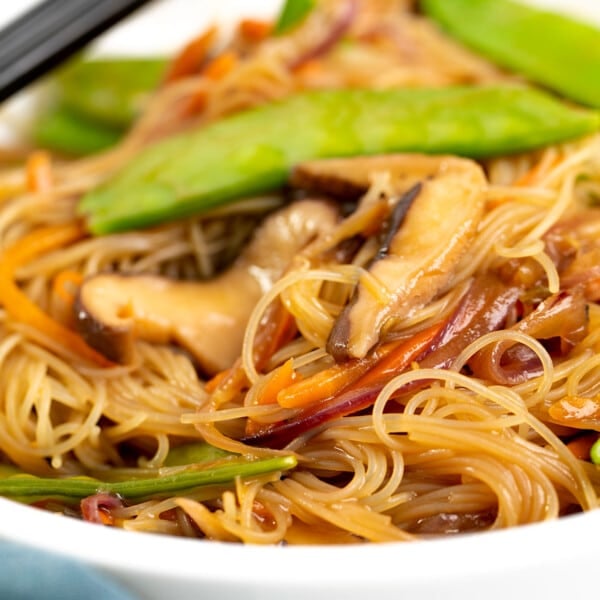
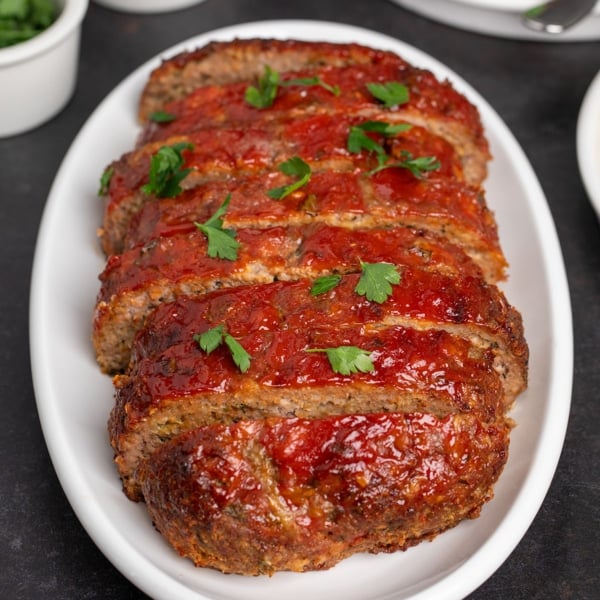









Can egg beaters be used in this recipe? I am allergic to egg yolks
Please see the section of the post titled “Can you make gluten free pasta vegan?” Sandra.
Have you made a lasagna using this recipe? Would you baked it fresh or boiled it first? My son can now eat baked eggs so I’m trying to expand his options. Thank you!
Yes, I have, Fernanda. I keep meaning to post my recipe with fresh lasagna! You don’t boil the noodles; just make sure there is enough sauce to coat the noodles and cover with foil for the first part of baking.
My daughter-in-law and I made this recipe following Nicole’s recommendations using Ultratex 3; it turned out fantastic. We used a pasta machine to roll the dough for ravioli and were easily able to reroll scrap pieces a second and third time with great results. What a gift to be able to make this with a family member who has celiac; she hasn’t had ravioli in a very long time. thank you Nicole.
I’m thrilled that you and your daughter in law had that experience together. Thank you for sharing that, Dona!
Hello Nicole:
I have a pasta attachment for my Kitchen Aid, and an old Ronco pasta maker. These require the mix to form small pea sized crumbles, no kneading, then extrude the dough mix.
Any recommendations or adjustments to your recipe? I’m thinking of using just enough liquid to bring the dough to the pea sized crumbles, and not the full amount of liquids.
Thanks,
Paul Pennza
I’m afraid that sounds like it would require a different recipe, created specifically for that purpose, Paul. I don’t have any experience with that, so I wouldn’t want to hazard a guess!
Can I leave this dough in sheets and use it to make manicotti?
Yes, you sure can, Tina.
This taste like I remember glutened pasta tasting!! So delicious!! I used GF flour from American Test Kitchen.
Amazing. Thanks for sharing!
Have you tried using the King Arthur GF flour blend? I know you recommend Better Batter but would love to use what I have on hand if it works!
Yes, I have, Courtney, and it doesn’t work reliably in any of my recipes, I’m afraid. I tried everything. Please click through to the all purpose gluten free flour blends page for full information.
I make your Better Batter blend that already has xanthan gum in it. Do I need to still add the xanthan gum in the recipe? I just ordered the Expandex so I’m excited to try this!
No, Sarah, as the recipe states, you omit xanthan gum as an additional ingredient when your blend already contains it.
I purchased your Better Batter Flour that has Xanthan Gum and Tapioca/Starch already in it. I am trying to make homemade GLUTEN FREE pasta. Your recipe calls for 5 TBLS of Expandex tapioca starch. Does the
tapioca starch in the flour suffice or do I need to add the additional 5 TBLS?
Expandex is not the same as tapioca starch. It’s chemically modified tapioca starch. This is a separate, additional ingredient, and you can’t just omit it. For more information on replacing it with tapioca starch or sourcing Expandex, please see the recipe ingredients list and the recipe notes, where it is all explained comprehensively already.